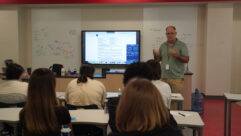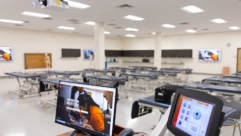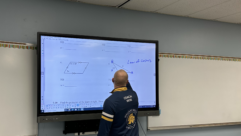Lessons from the Charratte
Having collaborated with architects all over the world, one AV consultant shares his real-world experiences and insists that things are getting better?to an extent.
Brad Grimes
The last time I sat down with frank sheehan,a friend and adviser to Pro AV, was during Integrated Systems Europe 2011, where he was preparing to present a course on digital systems design. Frank is the technology director at Visual Acuity, a technology and media consultancy in the U.K. that’s worked on projects worldwide, including many in the U.S. such as the Pro AV Spotlight Award–winning California Academy of Sciences. Having touched briefly on his presentation (Frank is a believer in “scalable buildings,” which are designed with enough high-bandwidth fiber to support future AV technologies), we launched into a discussion about the subject of this special issue–coordinating the work of AV pros and architects.
“It’s getting better,” he says, “but it needs to improve. Unfortunately, there are still some architects who are old-school. But some of the younger, more agile practices are embracing AV more.”
Sometimes when Visual Acuity visits global clients, the company will bring an architect that it has worked well with before in order to demonstrate how they’ll collaborate to achieve the client’s vision. But more often than not, Visual Acuity is still brought in long after the architect. “The pure architect, the creative person, has this beautiful design and often frowns on anything that changes it,” Frank says. “We worked on a gorgeous building in Saudia Arabia. But during the design process, the architect kept putting up obstacles.
“On a project we completed in Denver, we got around this in two ways. First, having worked with the architect on a previous project, we were part of the team from day one. Second, we made the technology part of the architecture. Take a projection screen, for instance. Instead of having a screen that bolts to a wall, we treated the wall with special fabrics that turned it into a screen.”
The key, according to Frank, is to think outside one’s comfort zone. The more AV pros coordinate with architects, the more AV pros get creative. “I can’t think of a project where we’ve done a typical AV installation. There’s always something unique. We like to take AV products that might not be architectural and use them in new ways.”
Bottom line: Clients want what you’re selling. “The biggest driving force to better coordination,” says Frank, “is the client’s hunger for technology.”










